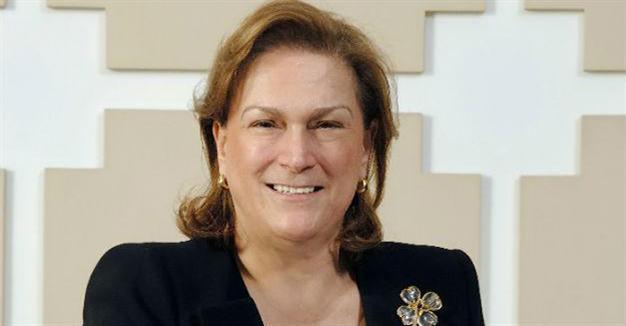Turkey’s Güler Sabancı named seventh most powerful woman in world
ISTANBUL

Sabancı Holding Chair Güler Sabancı has been named the seventh most powerful woman in the world in the latest list by Fortune magazine. Serpil Timuray, who leads Vodafone’s vast Africa, Middle East, Asia and Pacific (AMAP) business, ranked 23rd in the 2016 list.
An in-depth analysis was penned for Sabancı in the magazine.
“So far Sabancı, which operates in 16 countries, is holding its own. In the first half of 2016 the group’s sales rose 22 percent in local currency, and profits were up 11 percent. The family business’s third-generation leader and a fixture on Fortune’s Most Powerful Women international list, Sabancı is confident the country will rebound as well,” said the article.
“Turkey has an incredible stamina to come back,” she told Fortune in mid-August.
In 2004, she became Sabancı’s chair, elected by the majority of family members - and over many male relatives - following the death of her uncle Sakıp Sabancı.
“It was a startling development at the time, an unprecedented position for a woman in Turkey. That’s not her only ‘first:’ A leading Turkish philanthropist who founded a university in 1994, she has also proved savvy at navigating her nation’s complicated politics - steering clear of sensitive sectors while acting as a strong economic ambassador for Turkey,” added the article.
She is also a strong advocate for women’s development in her country and around the world.
This year, Fortune ranked the 50 Most Powerful Women based outside the U.S. Banco Santander group executive chairman Ana Botín repeats as number one, in a time of economic and political volatility for all, followed by Arundhati Bhattacharya, chairperson of the State Bank of India, and Isabelle Kocher, CEO of Engie, the world’s biggest non-state-owned electricity company.
The 2016 list spans 19 countries and is comprised of 16 percent new names.
 Sabancı Holding Chair Güler Sabancı has been named the seventh most powerful woman in the world in the latest list by Fortune magazine. Serpil Timuray, who leads Vodafone’s vast Africa, Middle East, Asia and Pacific (AMAP) business, ranked 23rd in the 2016 list.
Sabancı Holding Chair Güler Sabancı has been named the seventh most powerful woman in the world in the latest list by Fortune magazine. Serpil Timuray, who leads Vodafone’s vast Africa, Middle East, Asia and Pacific (AMAP) business, ranked 23rd in the 2016 list.